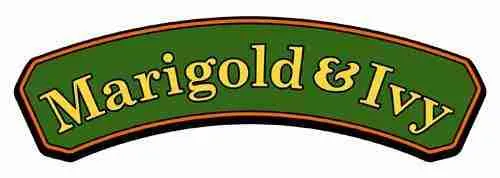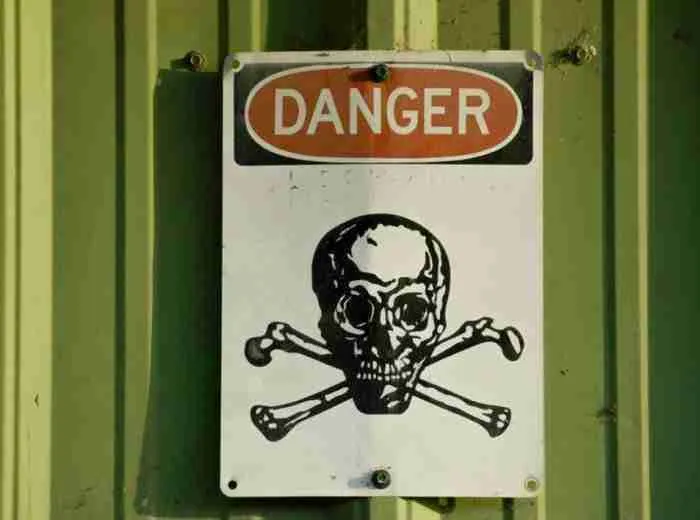
If you’re a homeowner or rent a home, you should be aware that there are dangerous things in your home. And if you have little ones, there are even more dangerous things you should be mindful of in your home. One of these dangerous things in your home are substances that can be poisonous if exposed to your child.
According to the most recent (2019) Annual Report of the American Association of Poison Control Centers’ National Poison Data System (NPDS), there was a total of 2,148,141 human poison exposures and 68,711 animal exposures. Of the 2,148,141 human poison exposures, 920,148 of these human poison exposures were to children five years old and younger.
To help reduce your child’s poison exposure and a call to your local poison control center for a potential substance poisoning, you need to know the most dangerous substances. Below are the top five types of substances from the NPDS report that expose your child to poison. We have also included how to help reduce exposure to them in your home and hopefully your parenting stress.
Before we get started let’s briefly distinguish between a poison exposure and a poisoning.
What’s the Difference Between a Poison Exposure and Poisoning?
Poison Exposure
Actual or suspected contact with any substance which has been ingested, inhaled, absorbed, applied to, or injected into the body, regardless of toxicity or clinical manifestation.
Poisoning
Poisonings happen when the exposure results in an adverse health reaction; when a substance interferes with normal body functions after it is swallowed, inhaled, injected, or absorbed.
You can think of it this way – All poisonings are exposures, but not all exposures are poisonings.
Now let’s look at the top five poison exposures and how to help prevent your child’s exposure to them.
Top Five Substances That Cause Poison Exposures in Your Home
1. Cosmetics/Personal Care Products
In 2019 there was a total of 109,465 poison exposures to cosmetics/personal care products for children ages five years and younger.
Everyone (even men) uses cosmetics and personal care products daily (or at least we hope you do). Actually, on average American women use 12 personal care products that contain 168 different chemicals. And men use six personal care products that contain 85 different chemicals. Because of this, these products are around the house and exposed to children daily.
If a child consumes cosmetics and personal care products orally or topically (through the skin), it can result in the child becoming ill and possibly having an allergic reaction. According to a study done from 2002 to 2016, almost 65,000 children went to the emergency department because of cosmetics-related injuries.
The FDA governs cosmetic and personal care products, and they include a list of the most inquired about cosmetic and personal care products on their website. Below are some of the most common cosmetics and personal care products from that list to keep away from children.
Nail Products: nail and enamel polish, nail and enamel polish remover, etc.
Injuries: 28% of emergency room visits
Hair Products: hair dyes, straighteners, shampoo, conditioner, including dry shampoo and conditioner, dry hair dyes, hair spray, hair removal products, and other hair products, etc.
Injuries: 27% of emergency room visits
Soaps & Lotions: hand and body lotion, bar and liquid soap, sunscreen, etc.
Injuries: 25% of emergency room visits
Cosmetic Fragrance Product: perfume, cologne, body spray, aftershave, deodorant, essential oils, etc.
Injuries: 13% of emergency room visits
Makeup: lipstick, blush, foundation, face powder, eye shadow, eyeliner, and mascara, etc.
How to help prevent poison exposures to cosmetics and personal care products
Store cosmetics and personal care items up high and out of reach of children after use. You can store them in a shower rack, medicine cabinet, shelf (up high), or even a chest with a lock. There are a lot of distractions nowadays but try to keep an eye on your child. Don’t leave anything out or in reach of your child, even if it is for a minute.
Also Be Aware: Exposure to some cosmetic and personal care products, due to the chemicals they contain, over time (for both children and adults) can also result in other health problems. To learn more about the “Toxic Twelve Chemicals and Contaminants in Cosmetics”, click here.
2. Cleaning Substances (Household)
In 2019 there was a total of 100,830 poison exposures to cleaning substances for children ages five years and younger.
Household cleaning products incorporate an assortment of products that aim to clean some area or item in your home. A lot of store-bought, conventional household cleaning products contain harsh chemicals and toxins for cleaning, disinfecting, or even to leave a scent or fragrance on an item, area, or in the air. Below are three types of household cleaning products that present the most risk for poison exposures to your young ones.
Laundry
Washing clothes is a weekly chore, if not a daily, for some moms and dads with young children. Some of the products you use to wash clothes are highly toxic to children. And being that they are used so often in your home, there is a high risk of exposure to children. Below are three laundry products that can cause the most poison exposures to your child.
Detergent:
Laundry detergent can contain a laundry list of toxic chemicals. And some laundry detergents like laundry pods are highly concentrated and dissolve when they come into contact with water like saliva and wet skin. Also, they are visually appealing to children because they are colorful and resemble candy. When children consume laundry soap products, they can experience vomiting and breathing problems and possibly become very drowsy. According to the American Association of Poison Control Centers, there were 10,559 cases of poison exposures to laundry detergent packets in 2020 for children five years and younger.
Bleach:
If you want to get your whites whiter (especially your child’s clothes), you’re probably going to reach for chlorine-based liquid bleach to do it. The chlorine in liquid bleach can be toxic and hazardous to your health and your child’s health if consumed internally (drunk or inhaled) as well as if it comes in contact with skin or eyes.
Chlorine produces acid when it comes into contact with moist tissues such as the eyes, throat, and lungs. This acid can damage these parts of the body. The extent of poisoning caused by chlorine depends on the amount of exposure a person has to it. It also depends on how the person came in contact with it and the length of time they came in contact with it.
Fabric softeners:
Fabric softeners are for softening your clothes and preventing static or wrinkles. But many of them contain toxic chemicals and dyes and are also strongly scented with fragrances. They can cause mouth and throat irritation and may induce vomiting if consumed orally.
The problem with fabric softeners is that they may include the following:
Quats (Quaternary ammonium compounds): They may be toxic to your reproductive system or cause asthma.
Fragrances: Products that list “fragrance” in the ingredient listing do not have to list the ingredients in that “fragrance”. So there could be harsh chemicals in that product, and there would be no way for you to know.
Preservatives and Dyes/ Colors: Manufacturers also only have to list the words: “preservative”, “colors”, or “dyes” on the ingredient listing of a label. Because of this, you are not going to know what is in the product.

Cleaning
Since the COVID-19 pandemic started in 2020, there has been an extra emphasis on cleaning your hands and using hand sanitizer. The same can be said about cleaning and disinfecting any objects or high-touch areas in and out of your home. Mainly “disinfecting” but also “sanitizing” became words that you saw and heard almost everyday. With a greater emphasis on disinfecting also came a higher risk of poison exposures and actual poisonings of people of all ages.
Why did this happen, and how can you help prevent poison exposures to cleaning and disinfectant products in your home?
Cleaning products:
According to the CDC (Centers for Disease Control and Prevention):
“Cleaning refers to the removal of germs, dirt, and impurities from surfaces. It does not kill germs, but by removing them, it lowers their numbers and the risk of spreading infection.”
Cleaning products include all-purpose cleaners, dish soap, bathroom and toilet bowl cleaners (with a disinfectant in them), floor cleaners, microfiber cloths, etc.
With the Covid 19 pandemic and an emphasis on cleaning and disinfecting came panic. People were buying out and using whatever cleaning products they could find at the stores. With more cleaning products around residences came more poison exposures to children. Between March 1, 2020 and June 30, 2020, there was a 10% increase in exposures to household cleaners in children 0-5 years old when compared to the year before.
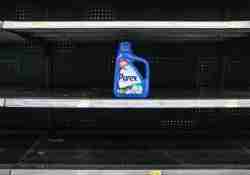
On top of more cleaning products being in people’s homes, some look like grape juice or soda or orange juice or lemonade. This makes them appealing to children to drink.
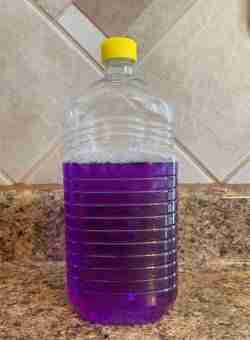
Disinfectants, Hand Sanitizers, and Bleach (for disinfecting)
According to the CDC (Centers for Disease Control and Prevention):
“Disinfecting refers to using chemicals, for example, EPA-registered disinfectants, to kill germs on surfaces. This process does not necessarily clean dirty surfaces or remove germs, but by killing germs on a surface after cleaning, it can further lower the risk of spreading infection.
As most people know, bleach doesn’t only whiten your white clothes (or anything else it gets on), it is also a disinfectant. Disinfectants also include ammonia, certain types of acid, rubbing alcohol, hydrogen peroxide, and the products on the EPA’s List N Disinfectants for Coronavirus.
With the increased demand and use of disinfectants, hand sanitizers, and bleach, there was also an increase in poison exposure cases reported to the U.S. Poison Control Centers in the year 2020 compared to the previous year.
Poison exposures for disinfectants increased 46%, while poison exposures for bleach increased by 29% across all age groups compared to the previous year. But children ages five and younger still represented the largest number of poison exposures. There was a total of 24,802 exposure cases related to hand sanitizers for children 12 years and younger.
Air fresheners
Air fresheners are for freshening the air in your home or a room in your home with a scent. But they can be dangerous to children and pets. Some liquid air fresheners are toxic and cause allergic reactions if swallowed or come in contact with skin. Evaporating beads and reed diffuser solutions pose the most danger to young children because they contain toxins and are easy to ingest. Children can also burn themselves if they touch an air freshener that uses a flame to emit the scent into the air.
How to help prevent poison exposures to household cleaning substances
All household cleaning products should be stored away and out of the reach of children. Treat them like they are hazardous substances and put them right away after using them. You can even go as far as locking them up in a storage area.
When disinfecting, avoid leaving surfaces wet when your children are in the room. Wet surfaces can expose your child’s skin to the disinfectant and make it easy for them to put their hand in it and then put it in their mouth.
Hide hand sanitizers in areas where your children will not find them.
Also Be Aware:
Another problem with many household cleaning products (and even disinfectants) is that they do not contain a full ingredient listing on the label. And that is because the law does not require the manufacturer to list them. Similar to products that contain fragrances and preservatives, you are not going to know what is in a cleaning product if the manufacturer doesn’t list it on the label.
Also, a lot of cleaning products with a “fragrance” will contain toxic VOCs (volatile organic compounds) that can cause temporary and permanent health problems. The same goes for air fresheners that contain fragrances. To avoid inhaling toxic VOCs from air fresheners, freshen the air in your home with natural air fresheners or diffuse essential oils.
3. Analgesics
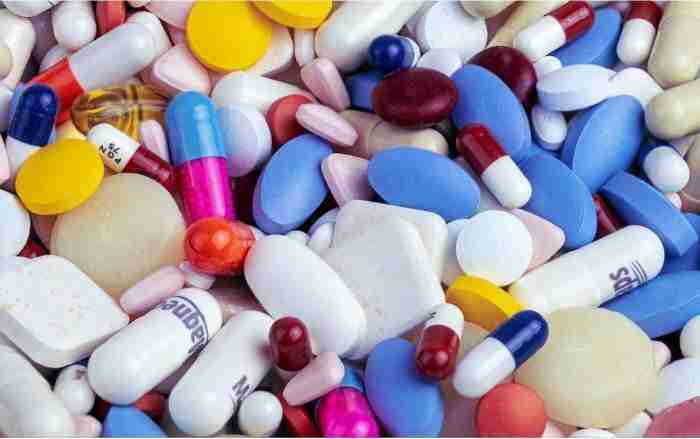
In 2019 there was a total of 85, 978 poison exposures to analgesics for children ages five years and younger.
Analgesics are pain medication, otherwise known as pain killers. They are used to relieve pain for a wide variety of ailments. And range from aspirin to morphine and opioid-based pain medication. Over the last couple of decades, there has been an increase in opioid-based pain medication prescriptions peaking in 2010. With an increase in prescriptions came an increase in the exposure of it to children and teenagers.
Children can easily overdose on pain medication and relievers, causing stomach pain, allergic reactions, and other severe complications, including death.
How to prevent poison exposures to analgesics
When it comes to analgesics, they must be stored in a location that cannot be accessed by children and preferably in an area that can be locked. Get a locked medicine cabinet or box to store them. Do not leave them in your purse or where your child can get them. And avoid taking them in front of your children.
Get rid of any medications you are no longer using. You can find out how to dispose of them here.
4. Foreign Bodies/Toys/Miscellaneous
In 2019 there was a total of 68,707 poison exposures to foreign bodies/toys/miscellaneous for children ages five years and younger.
A foreign body/object is anything that is not supposed to be in the body. They can include screws, batteries, crayons, container tops, coins, small erasers, etc. Obviously, toys are also a foreign object that children will commonly put in their mouth and swallow.
Outside of foreign objects, live things like insects are also a concern for children. They may find and consume them unaware they are poisonous. Even old food that is expired or rotten can become poisonous to a child.
Foreign objects and toys are not always poisonous but can cause breathing problems if they are lodged in the child’s airway or digestion and stomach problems if they make it into the stomach and intestines. Another problem with toys, specifically water toys with drainage holes, is that they trap moisture in them. That moisture can form mold, which the child can ingest.
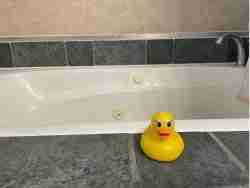
For anyone who has a young child or has had one, this is one of the main issues you have with them. Every parent knows that if you turn your head for one minute, your child can consume that nickel, old French fry they found in the sofa cushion, or that army figure’s sword.
How to prevent poison exposures to foreign bodies/toys/miscellaneous
Minimize the small items around your home. You can do this by cleaning your home or having a house cleaner clean your home regularly. Throw out old or expired food. This will also help minimize insects. Only give toys that are appropriate for their age and that do not include small accessories or parts. Also, purchase water toys that do not have holes in them where liquid can get trapped. And of course, always do the best you can to keep an eye on them.
5. Dietary Supplements/Herbals/Homeopathics
In 2019 there was a total of 48,537 poison exposures to dietary supplements/herbals/homeopathics for children ages five years and younger.
Dietary Supplements, herbals, and homeopathics are all health substances used by adults or administered by adults to children. These include:
- Vitamins
- Minerals
- Protein powder
- Amino acids
- Botanicals and herbs
Although they are natural they can still be toxic to children if taken in large quantities or exposed to your child’s skin. Poison exposure to dietary supplements, herbals, and homeopathics can result from an adult giving too much to a child or a child unintentionally giving themselves too much of the substance.
How to prevent poison exposures to foreign bodies/toys/miscellaneous
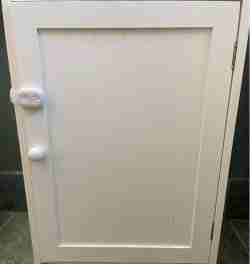
Similar to analgesics, storage is vital. Store them in a location that cannot be accessed by children and preferably can be locked. Read the label for dosage amount of dietary supplements, herbals, and homeopathics, as well as contact your pediatrician to confirm if your child can take it.
Bonus: Animal Exposures

In 2019 there was a total of 68,711 poison exposures for animals.
Some pets are like young children and need an eye kept on them. They can consume substances left around the house and may pose a threat or are hazardous to their health.
According to a study done from 2005 through 2014, most calls to the national poison control center regarding animal exposures were for dogs. These were mostly due to the consumption of human medicines, foods, and pesticides. The majority of poison exposure calls for cats were due to their consumption of human medicines, plants, and veterinary medicines. Chocolate was the most common exposure for dogs, while Lilium plants were the most common exposure for cats.
Much like children, pets can also consume household cleaning supplies, including laundry soap and fabric softener.
How to prevent poison exposures for animals
Follow the same guidelines mentioned earlier for children. Put away food and store your garbage (especially discarded food) in an area where your pet cannot get it. If your pet goes outside often or into your garage, make sure any pesticides or other chemicals are stored away. Thoroughly clean up chemical spills in your garage or driveway.
Conclusion
The substances you bring into and use in your home can be poisonous to your little ones, pets, and even yourself. But they are part of everyday life, and you aren’t going to stop using them. You can try to keep your eye on your little ones at all times, but there are more distractions than ever before. Or you can help prevent poison exposures to the substances in your home by starting with the suggestions given above.
Were you aware that cosmetics and personal care products were the number one poison exposure to children five years and younger? Let us know in the comments below.
You can reach your local poison control center by calling the Poison Help hotline: 1-800-222-1222. To save the number in your mobile phone, text POISON to 797979.
Sources:
- David D. Gummin, James B. Mowry, Michael C. Beuhler, Daniel A. Spyker, Daniel E. Brooks, Katherine W. Dibert, Laura J. Rivers, Nathaniel P. T. Pham & Mark L. Ryan (2020) 2019 Annual Report of the American Association of Poison Control Centers’ National Poison Data System (NPDS): 37th Annual Report, Clinical Toxicology, 58:12, 1360-1541, DOI: 10.1080/15563650.2020.1834219
- American Association of Poison Control Centers NPDS Coding Users’ Manual
- National Poison Data System, American Association of Poison Control Centers.
- Washington Poison and Drug Information Center (WAPC)
- Vajda J, McAdams RJ, Roberts KJ, Zhu M, McKenzie LB. Cosmetic-Related Injuries Treated in US Emergency Departments: 2002 to 2016. Clin Pediatr (Phila). 2019 Dec;58(14):1493-1501. doi: 10.1177/0009922819850492. Epub 2019 Jun 16. PMID: 31203655.
- Harvard Health Publishing Harvard Medical School
- Environmental Working Group – Toxic 12
- Environmental Working Group – Skip the Fabric Softeners
- NATURAL LIVING FAMILY
- Centers for Disease Control and Prevention
- U.S. Food & Drug Administration
- American Association of Poison Control Centers
- National Poison Data System (NPDS) Bulletin COVID-19 (Disinfectant)
- National Poison Data System (NPDS) Bulletin COVID-19 (Bleach)
- United States Environmental Protection Agency
- NCPC – Air fresheners: Are they safe?
Sources continued:
- Guy GP Jr., Zhang K, Bohm MK, et al. Vital Signs: Changes in Opioid Prescribing in the United States, 2006–2015. MMWR Morb Mortal Wkly Rep 2017;66:697–704. DOI: http://dx.doi.org/10.15585/mmwr.mm6626a4
- Journal of the American Veterinary Medical Association
- Drugs.com
- Guy GP Jr., Zhang K, Bohm MK, et al. Vital Signs: Changes in Opioid Prescribing in the United States, 2006–2015. MMWR Morb Mortal Wkly Rep 2017;66:697–704. DOI: http://dx.doi.org/10.15585/mmwr.mm6626a4External
- The Growing Impact of Pediatric Pharmaceutical Poisoning
- Journal of the American Veterinary Medical Association
- Wagwalking.com
